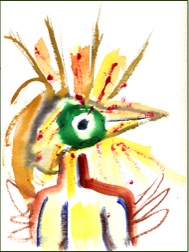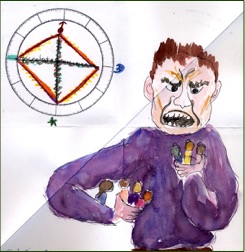

Trauma
Traumatic events range from natural disasters (floods, earthquakes) to violence of all kinds, to serious accidents, war, scary medical procedures, to someone close to you dying suddenly, to sudden loss of home (house fires, eviction). According to the DSM-V (Diagnostic and Statistical Manual of Mental Disorders) PTSD is defined as exposure to actual or threatened death, serious injury or sexual violation.
Simply put, the brain has three main regions:
• Brainstem
• Limbic System
• Cortex
The brainstem is the first to mature, and regulates basic functions like reflexes, and the cardiovascular system. The limbic system forms around the brain stem, and is the source of urges, needs, and feelings. It is where we respond to sudden events with a “fight, flight, or freeze” response. It also stores implicit memory, learned associations that link sensations to context. The cortex is the “thinking brain” where we plan, reason, and our language skills take place. Traumatic events often cause people to bypass the cortex for a limbic system response. Therefore, it can be difficult to talk about traumatic events because that part of the brain was overridden by a deeper part.
Art Therapy & Trauma
• Image making uses multiple areas of the brain, and can help access the implicit memories
stored in the limbic system.
• Art therapy helps contain traumatic experiences.
Cathy Malchiodi one of the major contributors to art therapy literature, and research, particularly in the area of trauma said, “Most therapists using creative arts or expressive therapies in trauma intervention capitalize on the ability of art, music, play, and other comparable methods of expression to contain traumatic experiences rather than encourage cathartic communication of raw emotions or mere repetition of troubling memories” (Malchiodi, C. 2003; 2012 Handbook of Art Therapy). In other words, the art helps contain the experience rather than re-traumatizing the individual.
For further explanations please peruse the following articles at these links:
Calm Through Creativity: How Arts Can Aid Trauma Recovery
National Clearing House of Families and Youth
Creative Art Therapy: Brain-Wise Approaches to Violence
Four key mind-body and brain-wise principles tell us why art therapy works
by Cathy Malchiodi, PhD, LPCC, LPAT in Arts and Health
What Art Therapy Learned from September 11th
Children's drawings of 9/11 increased our understanding of trauma and PTSD
by Cathy Malchiodi, PhD, LPCC
National Geographic - February 2015


